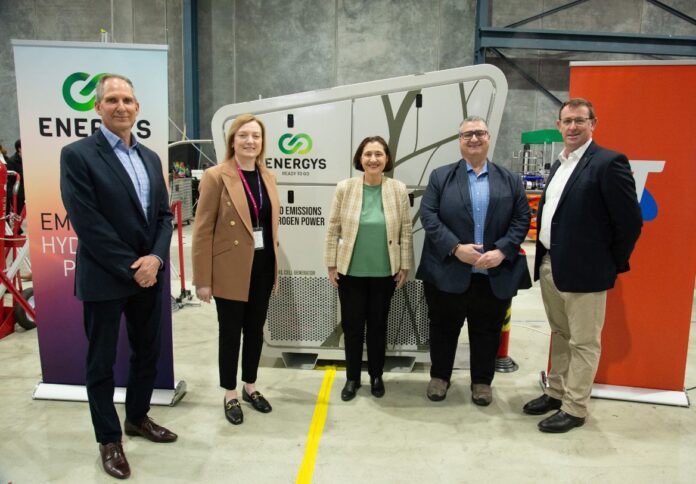
The Victorian government has awarded $1.1 million in funding to Telstra for the manufacturing and deployment of a 10-kW renewable hydrogen generator at each of the five regional areas in the state that suffered outages following strong storms in 2021.
Minister for Energy and Resources Lily D’Ambrosio unveiled the funding to kick off the Telstra Hydrogen Fuel Cell Pilot, which will boost energy resilience during storms in Coldstream, Kinglake, Christmas Hills, Chum Creek, and Neerim North.
“This innovative project uses renewable energy to keep the power running during an emergency, helping to maintain vital telecommunications, which is critical as we encounter more frequent extreme weather events,” Minister D’Ambrosio said.
The project will enable rapid changeover to allow continuous operation of site load and mobile connectivity when mains power outages occur. It also aims to demonstrate the reliability of renewable hydrogen as a zero-emissions fuel for generator backup power over diesel, the Victorian government said in a press release.
The renewable hydrogen generators are designed to provide 72 hours of backup power, which is significantly more than the existing battery backup capabilities at the regional sites.
“This Hydrogen Fuel Cell Pilot at five mobile base stations in Victoria will provide us with valuable data and experience of this emerging technology and how it may help to power telecommunications into the future,” said Nikos Katinakis, Telstra Group executive for global networks and technology.
The Telstra Hydrogen Fuel Cell Pilot was funded through the state’s $6.6 million Renewable Hydrogen Commercialisation Pathways Fund, which is currently backing five projects that will trial renewable hydrogen real-world applications.
The Victorian government has also deployed more than $600,000 to support eight recipients who will develop business cases or feasibility studies to support their transition to renewable hydrogen.
These projects are key to the state’s efforts to reach its net zero emissions target by 2046.














